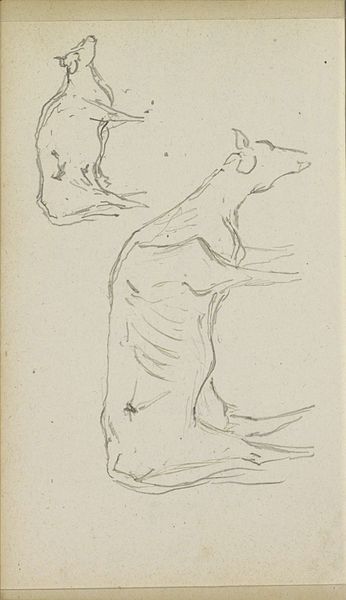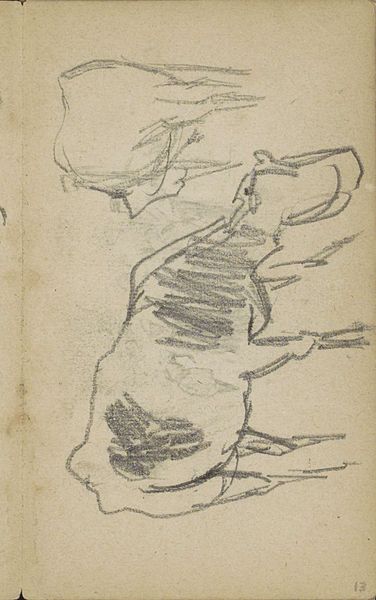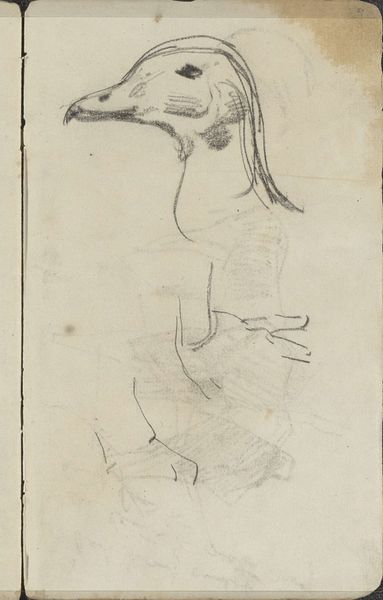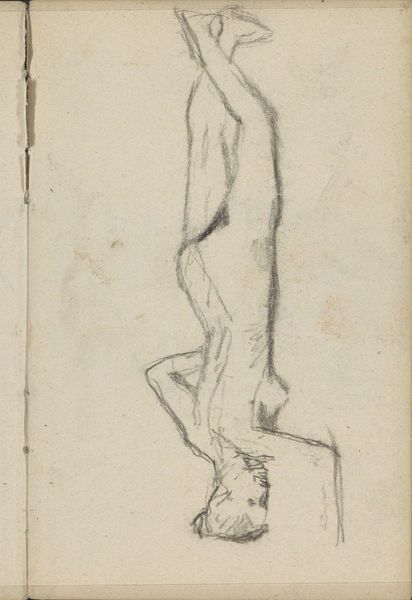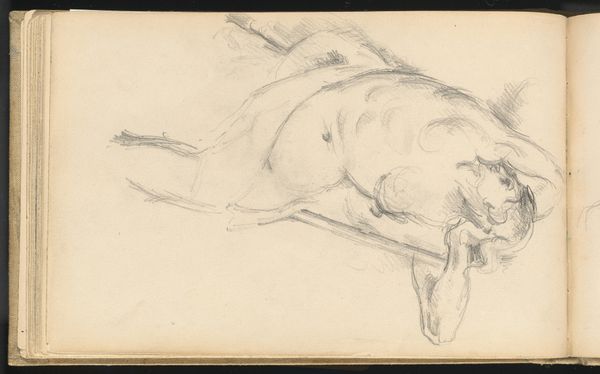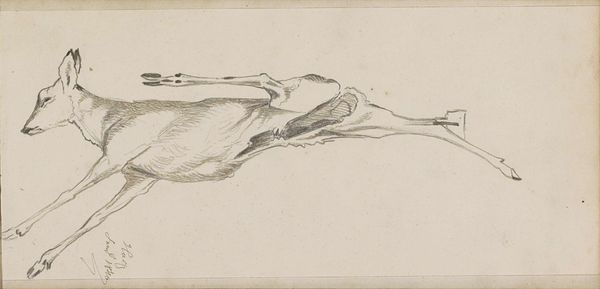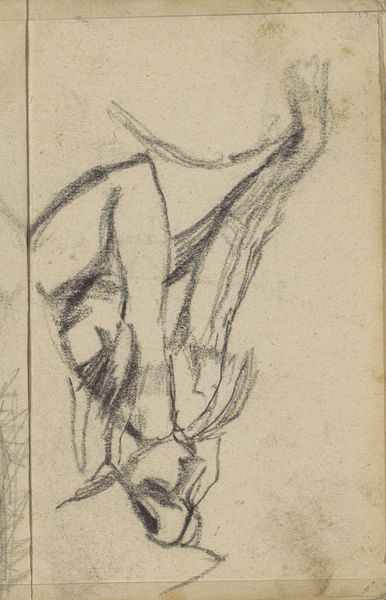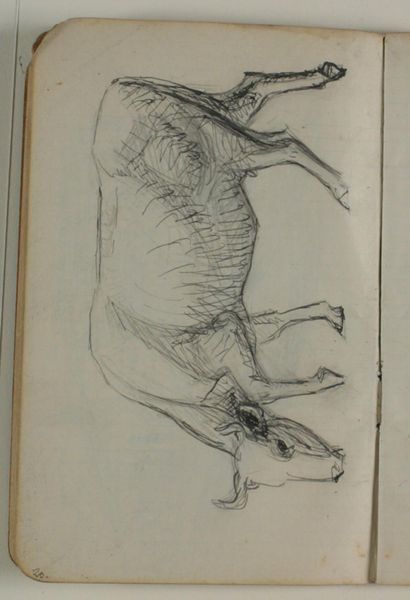
Koe met een bel om de nek, van opzij gezien Possibly 1858 - 1859
0:00
0:00
johannestavenraat
Rijksmuseum
drawing, pencil
#
drawing
#
amateur sketch
#
toned paper
#
light pencil work
#
pen sketch
#
pencil sketch
#
incomplete sketchy
#
landscape
#
figuration
#
personal sketchbook
#
ink drawing experimentation
#
pen-ink sketch
#
pencil
#
sketchbook drawing
#
genre-painting
#
realism
Copyright: Rijks Museum: Open Domain
Johannes Tavenraat made this study of a cow with a bell around its neck using graphite on paper. This Dutch artist was born in Rotterdam, the Netherlands, at a time of great political upheaval in Europe. Cows were especially important in 19th-century Netherlands. They were not only a source of food, but also of wealth. Farmers could sell milk and cheese, and cows were often used as collateral for loans. This drawing reflects the importance of agriculture in Dutch society. Animal studies like this one served an important function in academic training, where young artists would learn to represent the natural world with accuracy. Art historians consult a wide range of sources to understand the social and institutional contexts that shape artistic production. They also examine the economic and cultural factors that influence the creation and reception of art. Ultimately, the meaning of a work of art is contingent on its social and institutional context.
Comments
No comments
Be the first to comment and join the conversation on the ultimate creative platform.
